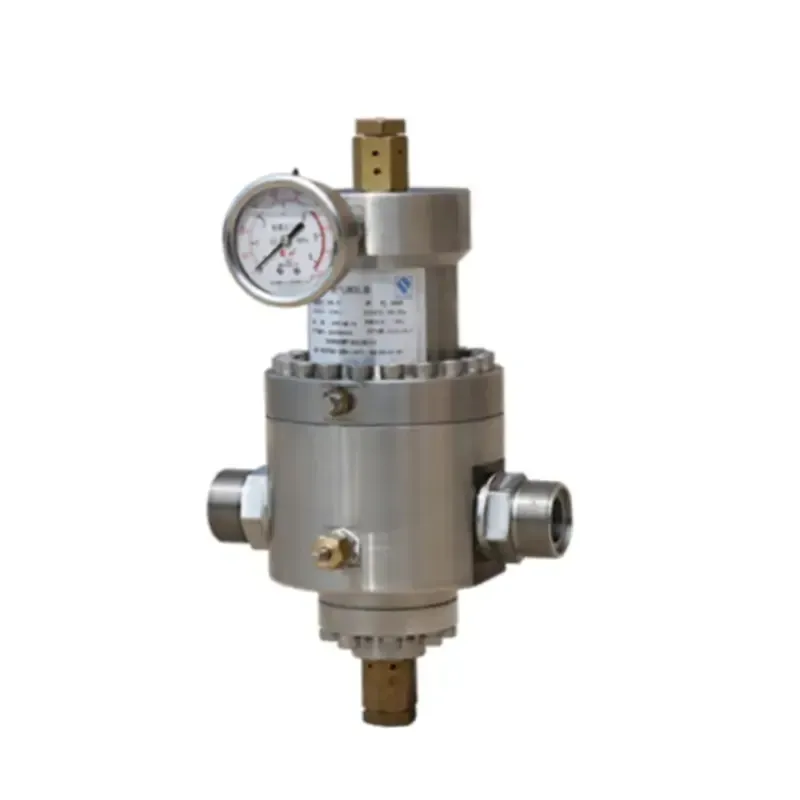
10 月 . 31, 2024 18:43
Back to list
Gas Pressure Control Valve for Efficient Pressure Regulation and Safety in Gas Systems
Understanding Gas Pressure Regulator Valves Essential Components in Gas Systems
Gas pressure regulator valves play a crucial role in the safe and efficient operation of gas systems across various industries. From residential heating systems to large-scale industrial applications, these valves ensure that gas is delivered at a consistent pressure, preventing damage to equipment and ensuring optimal performance.
At its core, a gas pressure regulator functions by maintaining a predetermined output pressure regardless of fluctuations in the input pressure or downstream demand. This is particularly essential because gas supply pressure can vary due to changes in volume and temperature, or as demand increases and decreases throughout the day. A regulator valve ensures that the gas delivered to appliances or machinery operates within safe and efficient parameters.
The functioning of a gas pressure regulator valve can be broken down into a few key components the diaphragm, spring, outlet pressure adjustment mechanism, and the inlet and outlet ports. The diaphragm responds to changes in pressure, moving to maintain the set pressure by adjusting the flow through the valve. The spring provides resistance that can be calibrated to set the desired output pressure. This dynamic balance allows regulators to respond rapidly to changes, ensuring stable gas supply.
gas pressure regulator valve

There are various types of gas pressure regulators, including single-stage and two-stage designs. Single-stage regulators convert high inlet pressure to a lower outlet pressure in one step, making them suitable for applications with relatively stable pressures. Two-stage regulators, on the other hand, provide a two-step reduction in pressure, offering greater accuracy and stability. This is particularly beneficial in systems where gas pressure fluctuations could lead to equipment malfunction or safety hazards.
Safety is paramount in any gas system, and pressure regulator valves are equipped with safety features to prevent overpressure conditions. These may include built-in relief valves that release excess pressure automatically or external monitoring systems that provide alerts if pressure levels deviate from safe ranges.
Installation and maintenance of gas pressure regulators must be performed by qualified professionals to ensure compliance with industry standards and safety regulations. Regular checks and servicing are essential to maintain the functionality and reliability of the regulators, preventing potential leaks or failures that could lead to serious consequences.
In summary, gas pressure regulator valves are indispensable components of gas delivery systems. By regulating and stabilizing gas pressure, they play a vital role in ensuring the safe and efficient operation of appliances and industrial equipment alike. As technology advances, these regulators continue to evolve, incorporating more sophisticated features for enhanced performance and safety. For anyone involved in the design, installation, or maintenance of gas systems, understanding the vital function of pressure regulator valves is essential for achieving operational efficiency and ensuring safety.
Latest news
-
Unlocking The Quality Gas Pressure ReducersNewsNov.01,2024
-
The Role of Gas Pressure Reducing StationsNewsNov.01,2024
-
The Importance and Functionality of Safety Relief ValvesNewsNov.01,2024
-
The Essential Role of Safety Valves in Natural Gas ApplicationsNewsNov.01,2024
-
The Essential Role of Gas Pressure RegulatorsNewsNov.01,2024
-
Enhance Your Premium Gas FiltersNewsNov.01,2024

